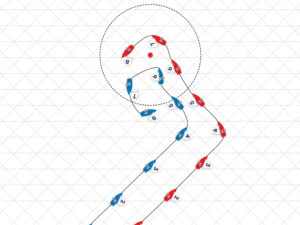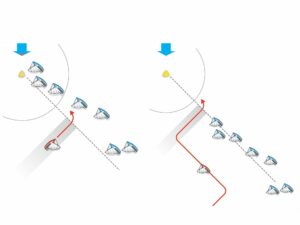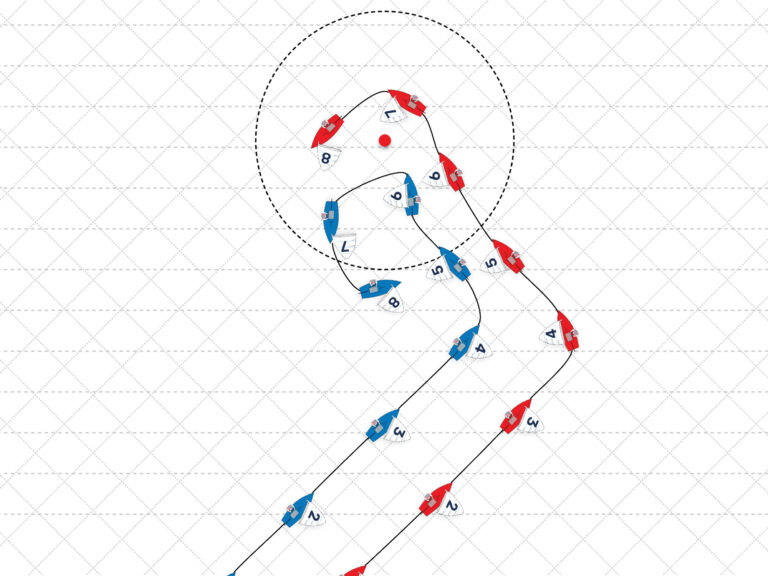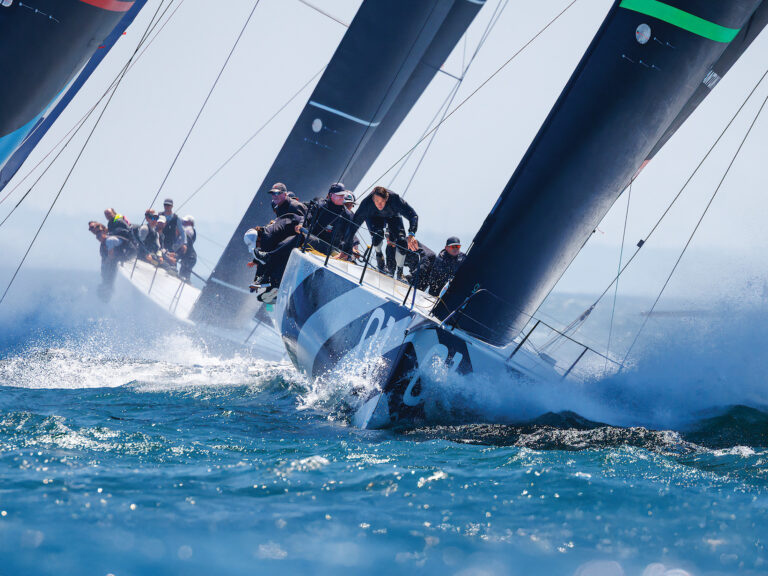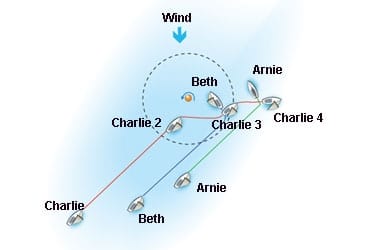
NovRules368
This month I address more reader questions about incidents at marks that do not involve Rule 18, Rounding and Passing Marks and Obstructions. In order to answer these questions, we must first pin down the meaning of two words that are used without italics in the rulebook-the verb “to tack” and the adjective “close-hauled.”Before 1997, both terms did appear in italics in the rulebook, and there is a temptation to continue to use the old rulebook definitions even though they are not in the current rulebook. This should not be done. The definition of a term that appears in italics is a special technical definition. The rulebook definitions of italicized terms are almost all quite different from their everyday meanings. In the rulebook’s Introduction, we find that words that do not appear in italics “are used in the sense ordinarily understood in nautical or general use.”The verb “tack” is used by all sailors, practically from their first day in sailing class. Ask any beginning, non-racing sailor what it means to tack, and they’ll tell you something along the lines of, “A boat tacks when she luffs up from about 45 degrees off the wind on one tack, her bow passes through head to wind, and she bears off about 45 degrees until she can sail on the other tack.” Under the pre-1997 rulebook definition, a boat was “tacking” only during the second half of that 90-degree turn. Obviously the pre-1997 definition conflicts with the ordinarily understood meaning of “tacking” and, therefore, it should no longer be used.A neophyte sailor might learn what “close-hauled” means on their second day in sailing class. The Oxford Companion to Ships and the Sea, an excellent source for definitions of nautical terms (published in 1976), defines “close-hauled” as “a condition of sailing when a vessel trims her sails so that she proceeds as close to the wind as possible with all her sails full and not shivering.” Other dictionaries have similar definitions of the term. Today we might use slightly different words, but with essentially the same meaning. We might say, “a boat is sailing close-hauled when she is sailing so as to achieve the her best VMG to windward.”Now let’s apply these definitions as we analyze two questions from readers. Dallas Carson wrote with questions about a situation that occurred in about 15 knots of wind as three boats approached a windward mark to be rounded to port. As shown in the diagram, Arnie, Beth, and Charlie were all sailing close-hauled on port tack with Beth clear ahead of Charlie and on a track to leeward of his track. Similarly, Arnie was clear ahead of Beth, and on a track to leeward of her track. When Beth reached the layline, she tacked and, right after she assumed a close-hauled course, Charlie had to bear off to duck her stern. Charlie then headed up to close-hauled and, soon thereafter, Arnie started to tack. Arnie blew his tack and ended up luffing, practically in irons, moving very slowly on a course above close-hauled. Again, Charlie had to change course, this time to avoid Arnie. He managed to duck behind Arnie and avoid contact. Charlie protested both Beth and Arnie. Dallas Carson asked whether any boat broke a rule.Let’s first consider the incident involving Charlie and Beth. Initially, Rule 12 applied between Beth and Charlie and required Charlie to keep clear. Beth reached the two-length zone clear ahead of Charlie. At that time, Rule 18.2(c) began to apply and it too required Charlie to keep clear of Beth, which he obviously did. While Beth was tacking, at the moment she turned past head to wind, both Rules 12 and 18.2(c) ceased to apply, and Rule 13 required Beth to keep clear of Charlie until she was on a close-hauled course. Then, Rule 13 ceased to apply and Rules 10 and 15 began to apply. Under Rule 10 Charlie was required to keep clear of Beth, but (because Beth had acquired right of way as a result of her tack onto starboard), Beth was required by Rule 15 initially to give Charlie room to keep clear. Charlie was able to hold his close-hauled port-tack course until Beth was on a close-hauled starboard-tack course, and then he had room to bear off to keep clear of Beth. Therefore, Beth broke neither Rule 13 nor Rule 15, and Charlie kept clear as required by Rule 10. The protest committee should not penalize either boat.After Beth turned past head to wind, she and Charlie were approaching the mark on opposite tacks. Beth completed a tack in the two-length zone. After she changed tacks, Beth was fetching the mark. Given these facts, you might ask why Rule 18.3 did not apply. Rule 18.3 applies “if two boats were approaching a mark on opposite tacks and one of them completes a tack in the two-length zone when the other is fetching the mark.” Note that the rule applies only when the fetching boat and the tacking boat are not the same boat. In the example we’re considering, Beth was both the boat that completed a tack in the zone and the boat fetching the mark. Therefore, the conditions under which Rule 18.3 applies were not met.Next, Charlie encountered Arnie. At position 3, Charlie found Arnie in irons in his path. Rule 13 applied because Arnie had turned past head-to-wind, but not yet managed to bear off to a close-hauled course. Because Arnie had turned past head to wind, he was on starboard tack. Obviously, Charlie was on port. However, because Rule 13 applied Rule 10 did not (see the second sentence of Rule 13). Arnie broke Rule 13 because Charlie needed to change course to avoid him. Charlie’s only obligation was, under Rule 14, to avoid contact with Arnie, which he did. Therefore, Arnie should be disqualified.A reader from Boston wrote about a bit of chaos at a leeward mark in “near survival conditions,” with winds well in excess of 25 knots. Yee Haw, a 26-foot keelboat, was required to leave the mark to port. With no other boats nearby, she jibed from starboard tack to port as she approached the mark. Immediately after jibing she broached, rounded up and plastered the mark to her starboard side. To extricate herself and round the mark on the required side, Yee Haw had to tack and then jibe a second time. Also, to exonerate herself for touching the mark, she had to take a penalty turn that included one tack and one jibe. While still in contact with the mark, her skipper put the helm down and began to tack. Sometime during her tack, the mark rolled clear of her starboard side.Did Yee Haw’s tack and jibe, which were necessary to round the mark on the required side, also “count” as the tack and jibe necessary to exonerate her for touching the mark? There is nothing in Rule 31.2 that requires her to make a tack and jibe in addition to any tack and jibe necessary to sail the course. However, Rule 31.2 states the penalty turn may be taken by a boat that “has broken” Rule 31.1 by touching a mark. When Yee Haw began her tack she was still touching the mark-i.e., she was still breaking Rule 31.1. Use of “has broken” in Rule 31.2 implies the penalty turn must be taken after the boat is no longer touching the mark. But Yee Haw began her tack while still in contact with the mark. For this reason, I believe that Yee Haw did not exonerate herself from breaking Rule 31.1. To do so, she should have made both her tack and her jibe after she was no longer touching the mark.E-mail for Dick Rose may be sent to rules@sailingworld.com

